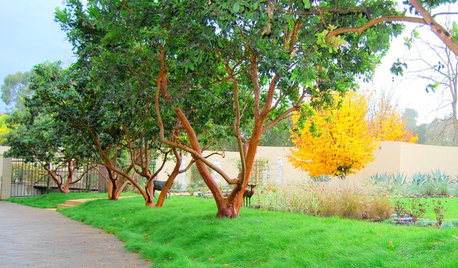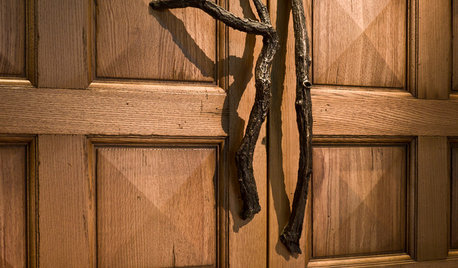what do i do with my white oak seedlings over the winter!?!
billyboy_gardener
15 years ago
Featured Answer
Sort by:Oldest
Comments (30)
spruceman
15 years agoarbordave (SE MI)
15 years agoRelated Discussions
what do i do with my 40 'free range' chickens in the winter??
Comments (3)You don't mention the breed of chickens. If they have short combs, just wrap the walls in plastic to cut the wind and your birds should be fine. The key issue is that they have to stay dry and out of the wind, then their feathers insulate them.You'll lose a few, but that's chickens. You'll have to feed them, and make certain that their water is available and not frozen over, or water them twice a day. I assume you have some predator protection? If not, you'll lose them to hungry wildlife. My suggestion would be to butcher all but 6 (for eggs) and give those 6 an old shed or cleaned out dog house, with roosts for the night. It's not economically feasible to over-winter 40 chickens. That will give you time to build a sturdy snow-proof winter coop for the next winter. Also, if you want to raise birds for eggs you'd be better off with ducks. Khahki Campbells or Welsh Harlequins have a better feed/egg ratio, lay more eggs and unlike chickens will lay well (usually an egg each a day) for their lifetimes, not for just 2-3 years. They thrive in winter conditions with minimal shelter (you can make mini tunnels the same as for crops if predation is not an issue)as long as they have constant access to fresh water. They don't need extra light to lay well in winter and the eggs bring in twice the money. And they are far hardier than chickens, they don't die off the same way- just don't give them medicated feed....See MoreWhat can I do with my onions over winter?
Comments (4)You may get bulbs next year, but you may also end up with no bulbs and lots of flowers which is what I suspect will happen. Most onion varieties are photoperiod sensitive and bulb formation is triggered by how long the night is. It's likely that your plants simply didn't have enough energy to form bulbs when they got triggered to do so. Onions are biennials which flower in their second year which is why I think the train may have left already in terms of getting bulbs. Certainly you can keep them and see what happens. You can also use them for green onions. If bulb production is your goal though I would get some plants next year of a variety appropriate to bulb well in your area. Google Dixondale Farms and read their FAQ section to get a really good understanding of what varieties are likely to perform best in your area. In the event you decide to purchase plants I recommend Dixondale highly. I don't think you will find anyone who has had a bad experience with them and they always send far more than you order....See MoreWhat to do with potted seedlings over the winter?
Comments (4)If your seedlings were potted up for some time i would advise you to leave them outsde and not weeken them by bringen them under cover the hare realy hardy plants.I have around 1000 plants i grow from seeds last year,the wil be in there second season next summer,end i hope for some good coulors the are "Helleborus Atropurpurea. Regards and good luck...See MoreRed oak vs. white oak...how do I know which I have?
Comments (10)Can you take one or two clear digital photos and post it? With an oil based finish or sealer (and not stained), red oak is generally amber to orange-reddish in tone, whereas white oak is more tan to golden brown. With a water based finish, both species will be much lighter or whitish, but the basic color tones will still be there. Red oak generally has a thicker or wider earlywood cell layer (the rings you see), whereas the white oak earlywood layer is usually very narrow in width. This is most easily visible on the end of a board or with rift and quartered. When looking down on flatsawn flooring, both species rings can appear wide. White oak has rays (the cells that are perpendicular to the rings) that are longer (1-2 inches) and are very noticeable as wide ray fleck in 90 degree quartered material. Red oak rays are short (1/2" - 1" long), but can be easily seen due to the lighter colored wheat or amber red oak wood and the generally wider annual growth rings. This flooring company has some good pictures of both red and white oak with an oil based finsih: Here is a link that might be useful: Launstein oak pictures...See Morebillyboy_gardener
15 years agoken_adrian Adrian MI cold Z5
15 years agogreenman28 NorCal 7b/8a
15 years agoarbordave (SE MI)
15 years agobillyboy_gardener
15 years agoarbordave (SE MI)
15 years agoken_adrian Adrian MI cold Z5
15 years agolpptz5b
15 years agoMissSherry
15 years agoarbordave (SE MI)
15 years agoken_adrian Adrian MI cold Z5
15 years agobillyboy_gardener
15 years agoken_adrian Adrian MI cold Z5
15 years agoaristata
15 years agoken_adrian Adrian MI cold Z5
15 years agotreeguy123
15 years agoHU-148472602
4 years agomackenzie mitchell
2 years agoken_adrian Adrian MI cold Z5
2 years agoMissLeeNY
last yearToronado3800 Zone 6 St Louis
last yearbeesneeds
last yearKyle Lynn
3 months agoken_adrian Adrian MI cold Z5
3 months agoKyle Lynn
3 months agoBillMN-z-2-3-4
3 months agocecily 7A
3 months ago
Related Stories

GARDENING GUIDESGarden Myths to Debunk as You Dig This Fall and Rest Over Winter
Termites hate wood mulch, don’t amend soil for trees, avoid gravel in planters — and more nuggets of garden wisdom
Full Story
DECORATING GUIDESRoom of the Day: Black, White and Red All Over
Custom fabric, heirlooms, bold color and a beloved collection of books cozy up this farmhouse library
Full Story
WOODWoodipedia: Make a Solid Choice With Oak
Forget those low-end products of old. Red and white oak today are beautiful, versatile and relatively inexpensive
Full Story
LIFESimple Pleasures: A Long Winter’s Nap
This time of year we can always use a little extra rest. Make it easy with these ideas for daytime napping
Full Story
DECORATING GUIDESSo Your Style Is: Black, White and Read All Over
Make headlines at home with newsworthy decor
Full Story
GARDENING GUIDESCelebrate Eastern Oaks for Wildlife, Longevity and Seasonal Interest
There might not be a more important tree to have in your eastern U.S. landscape — if you can fit one in
Full Story
PRODUCT PICKSGuest Picks: Snowy, Starry Winter Decor
Let winter's magic reach every room with accessories, furnishings and fixtures done up in nighttime blue and snowdrift white
Full Story
DECORATING GUIDESTreat Yourself to Spring Blooms in Winter
Get a jump on spring with a fragrant pot of paperwhites and other bulbs indoors
Full Story
GROUND COVERSGreat Design Plant: Evergreen Candytuft for Glossy Winter Foliage
Keep your garden green through frosty days with this woody subshrub — then delight in sparkling white flowers come spring
Full Story






lpptz5b